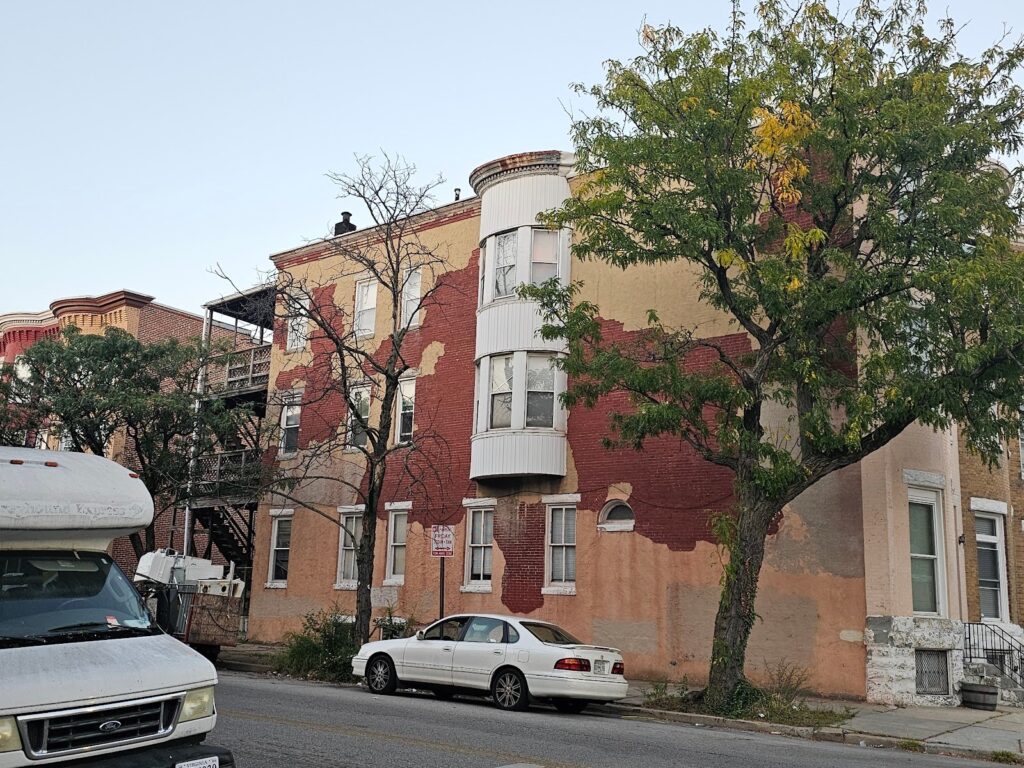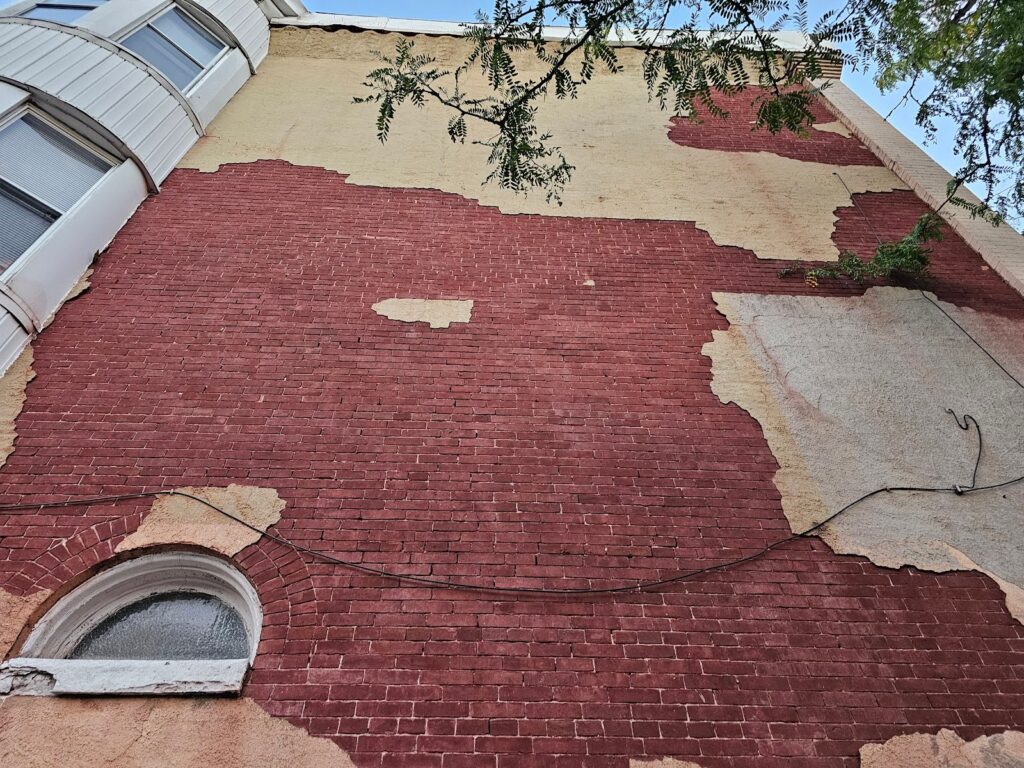Historic Brick Challenges: Stucco Delamination Explained
Of all of the historic buildings built here in Washington, DC, the vast majority of them are built with brick masonry. It’s not that there weren’t other types of materials available for construction, back in historic times. In fact there are some examples of other types of buildings here. Some buildings are built with a stick frame and clad with sheet metal as a type of siding. Other wood frame buildings are also clad with wood sidings. The problem with wood frame buildings and particularly wood siding buildings is that they don’t normally last as long.
Some of them have deteriorated and rotted completely since the original construction. Also, not as many wood frame buildings were used in typical historic construction. During the period following the great fires, people understood the risk of building homes and buildings close to one another built with wood. Essentially, as a fire spreads, one building catches fire and the fore in that building ignites the buildings next to it. Brick buildings don’t face the same type of risk though. For the most part, these brick buildings are highly resistant to burning.
In fact most bricks were created through a process referred to as firing. In this process the bricks are basically cooked at sometimes over a thousand degrees Fahrenheit by being surrounded with burning wood in a kiln. The modern processes of brick firings don’t often any longer use organic materials, in most cases, but the temperatures used today are even higher.
Today we’re looking at a typical brick row home built like so many thousands of others here in Washington DC. One of the differences between this building and the majority of the rest is that this building is clad with an exterior stucco system on the exterior of the sides of the brick.
This type of application isn’t uncommon. It’s just that the majority of buildings don’t have this stucco applied. In most cases, the stucco applications were applied way after the original construction. In fact in some cases, these stucco applications were just applied as an alternative to repointing. We consider this to be a very poor alternative to repointing because stucco applications don’t address the real root issue.
Repointing should be done, in any case. In some cases when stucco is applied on top of delaminating or deteriorated areas of mortar, it can compromise the stucco application to an extent. Here in this particular case, as you can see in the pictures below, the stucco application is severely compromised.

Much of the has delaminated right off the face of the brick. This particular brick has been painted before the application of stucco. The causation or root cause analysis of the failure of the stucco is multifactorial. In simple terms, that means it’s complicated and not easy to just point to one specific cause of failure.
One of the most likely reasons or causes of this delamination and failure is that the substrate prep was done inadequately. Another potential cause of the failure is related to the key constituent components in the stucco. The substrate mortar in the brick facade was made with a lime binder. If the new stucco was made using a portland-type binder, it’s likely that there was a differential movement that accelerated or at least partially caused delamination. The issue of compatibility between Portland mortar and lime mortar is a topic that is mentioned often here, on our company website and in our blog.
We talk about it often because we’re often working to identify the causes of failure of construction elements. Our company is a repointing specialist so we don’t often find problems with our own work but we often find problems with the work of other contractors. In many cases these problems lead to significant types of failure and or problems with the work. In some cases, as we’ve explained here on our website in the past, repointing with the wrong mortar is much worse than not repointing at all.

We can Help
Our company focuses on historic restoration more than modern building upkeep, maintenance, and construction, but our company understands both types of construction very well and a full picture well-rounded approach is needed in any niche in the construction industry. Although we focus on historic restoration, repointing, tuckpointing and historic brick repair, our company also has technical knowledge and competencies in the areas of modern and contemporary construction as well as we become one of the leaders in that area of the market today. Understanding both historic and modern or contemporary construction is useful because both aspects help understand the challenges and potential solutions for challenges in building science and construction.
We can help with a variety of historic masonry restoration needs and upkeep, from modest tuckpointing and or repointing to complicated and extensive historic masonry restoration. Infinity Design Solutions is a historic restoration specialist contractor specializing in both historic masonry restoration such as tuckpointing our repointing, and brick repair. If you have questions about the architectural details or facade of your historic building in Washington DC, reach out and say hello and if we can help we’ll be glad to assist you. You can email us or call us on the telephone at the following link: contact us here.
